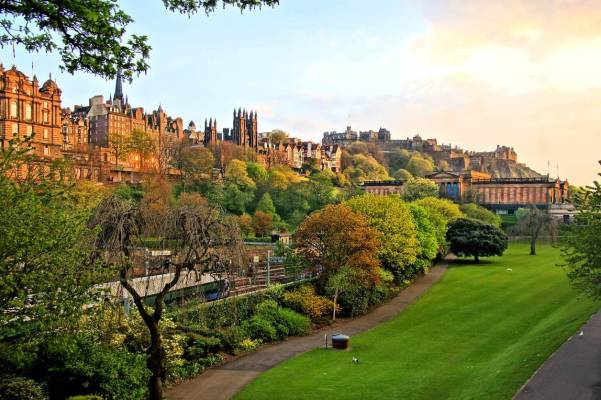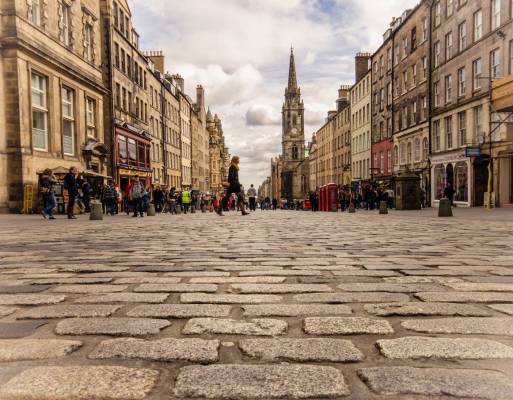
The most fascinating tales from Edinburgh’s rich history

Discover the greatest and grizzliest stories from Edinburgh’s past, and where you can find out more about them
Edinburgh is famous for being a city drenched in history and culture. Everywhere you turn there are stories to hear and secrets to be uncovered beneath the everyday hub of the iconic cobbled streets. Some of these tales are heart-warming, some heart-breaking, and some just downright terrifying!
Read on to discover six of the city’s most fascinating stories, as well as where you can go in Edinburgh to find out even more about them.
Greyfriar’s Bobby
Let’s start with one of Edinburgh’s most well-known and beloved tales. Greyfriar’s Bobby is the story of a loyal Skye terrier. Back in 1850, a gardener named John Gray arrived in Edinburgh with his wife and son. Not wanting to enter the workhouse, he joined the police force instead and took up a patrol companion: Bobby the Skye terrier.
The pair became a common sight around the city streets, together rain or shine. Over the next few years, John received treatment for tuberculosis until the illness eventually killed him on 15th February 1858. He was buried in Greyfriar’s Kirkyard.
From the moment John was buried, Bobby refused to leave his grave, withstanding even harsh winters. Eventually the keeper of the kirkyard gave up trying to evict the dog and instead made shelter for him over John’s burial site. Bobby would only leave the kirkyard once a day for his midday meal, before immediately returning.
Bobby’s loyalty captured the hearts of the Edinburgh residents, who banded together to care for the mourning mutt. Bobby kept his master company for fourteen years after his death, until Bobby’s own death in 1872.
The story of faithful Bobby is as popular today as it was in the 19th century. Outside the cemetery is a famous statue of the dog, often flanked by tourists taking selfies, and in the kirkyard itself you can find both John and Bobby’s graves. The inscription on Bobby’s headstone reads: “Greyfriar’s Bobby — died 14th January 1872 — Let his loyalty and devotion be a lesson to us all”.
The Lost Lochs
Did you know that Edinburgh used to be home to two great lochs? It’s impossible to imagine today, but there was once a time when two of the city’s most popular green spaces were huge bodies of water. The North Loch and South Loch (or Nor Loch and Burgh Loch as they were then known) dominated the city and were used by residents for very important purposes.
In the early 17th century, Nor Loch lay in what is now West Princes Street Gardens, and Burgh Loch could be found where the Meadows now reside. Burgh Loch supplied much of the city’s drinking water, whilst Nor Loch was used for important defensive means (as well as providing the city’s waste disposal!)
It was in 1621 that Edinburgh received its first piped water supply from Coniston, after which plans were put in place to have the marshy loch-lands transformed into usable areas of leisure. Some clues of the parks’ past remain hidden in the city’s local names, however, such as “Boroughmuir” which means “the land south of Burgh Loch”.
Half Hangit Maggie
Maggie Dickson was an 18th century fish hawker whose husband left her in 1723, causing her to move south to the Borderlands where she worked as an innkeeper. After beginning an affair with the innkeeper’s son, Maggie soon discovered she was pregnant. She knew that this would result in her immediate dismissal, so Maggie attempted to conceal the pregnancy.
The baby was born prematurely and died in just a few days, and Maggie hid the body on the bank of the River Tweed. But that same day the baby was discovered and traced back to Maggie. She was tried under the Concealment of Pregnancy Act and sentenced to execution in Edinburgh’s Grassmarket in September 1724.
After her hanging, having been pronounced dead, Maggie’s body was bound for Musselburgh for burial. However, the journey was halted when the driver heard a banging from inside the coffin. The lid was lifted and Maggie was discovered alive!
For many, this was seen as a sign from God. Maggie was a free woman and able to live for another 40 years, acquiring the nickname ‘Half Hangit Maggie’. You can discover more about Half Hangit Maggie at the Edinburgh Dungeon, if you’re feeling brave.
Deacon Brodie
William Brodie was a 16th century cabinet maker, Edinburgh city councillor and deacon of a trades guild named the Incorporation of Wrights. Why is he still talked about? Because of his secret life as a burglar.
Brodie was a highly respected man in his day, socialising with gentry and famous figures like the poet Robert Burns and the painter Sir Henry Raeburn, but by night he indulged in thievery both to fund his gambling habit and simply for the thrill.
When a planned raid on the Excise office failed, Brodie’s downfall began. He was put on trial in 1788 and was eventually hanged on October 1st before a crowd of 40,000 witnesses.
Travelling down the Royal Mile, you’ll see evidence of Brodie’s legacy dotted all along the street. Be sure to stop in for a drink at the Deacon Brodie pub while you’re there!
Burke and Hare
One of Edinburgh’s most spine-chilling tales is that of Burke and Hare. William Burke and William Hare were responsible for 16 murders committed over the course of 10 months in 1828.
In the early 19th century, Edinburgh was a leading hub of anatomical study. As consequence, grave-robbing was common as people could fetch hefty sums for bodies which could be dissected by doctors. Burke and Hare began their criminal streak by turning in the body of one of Hare’s lodgers, but soon moved on to killing living people in order to hand over their bodies to Doctor Robert Knox for reward money.
When suspicions against the men rose, Hare saved himself by turning in evidence against his partner. Burke was found guilty of murder and sentenced to death. His skeleton can still be found on display at the Anatomical Museum of Edinburgh Medical School. What’s more, if you pay a visit to the Surgeon’s Hall museum just south of South Bridge, you can see his death mask too.
Rowling’s Magical Inspiration
One of Edinburgh’s most recent stories is its most magical. We all know the name Harry Potter, and the incredible stories of Hogwarts, spells, dark wizards and fantastical creatures that go with it. Well it was in Edinburgh that J.K Rowling first began to put her whimsical world to paper.
Look out for The Elephant House tea room just along from the Grassmarket, where Rowling pondered her stories over coffee and cake — you’ll be able to spot it from the sign in the window and the queue out the door! It’s also said that Edinburgh’s Old Town streets were the inspiration for the enchanting Diagon Alley, and be sure to look out for Thomas Riddle’s grave in Greyfriar’s Kirkyard: Rowling’s choice for Lord Voldemort’s true name.
There are hundreds of other stories beyond these six hidden in Edinburgh’s winding streets, like the Great Fire of 1824 or the tale of Sawney Bean: Scotland’s most infamous cannibal. What unbelievable stories could you discover?
Give yourself the opportunity to immerse yourself in all that Edinburgh has to offer by moving closer to the action. Book a tour of the luxury apartments here at Quartermile by calling 0845 000 2525.






